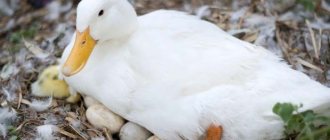Basic growing rules
Christmas tree is an epiphytic cactus, which in most cases prefers to develop on another plant, using the juice from its bark as moisture. In the wild, it grows on trees, but at home it can be grown in pots filled with a suitable substrate that ensures rapid drainage of water.
Important! Rozhdestvennik is one of those plants that it is better not to disturb during the budding period.
Unless absolutely necessary, you should not even turn the pot , otherwise the formation of flowers may stop, and they will no longer be as beautiful as they should be.
The basic rules for growing such an unusual plant include the following requirements:
- the lighting should be bright and diffused, which can be achieved by placing pots on east or west windows (when growing on the south side, the windows will have to be shaded in the afternoon);
- temperature indicators within the range of +18...+40°C, not forgetting that the most comfortable temperature in summer will be in the range of +18...+22°C, and in winter - +14...+16°C;
- the ideal air humidity for the plant is 75% or higher, which is achieved by regularly spraying the Christmas tree with a spray bottle (in summer - 1-2 times a week, and in winter - once a month);
- soil fertilization is carried out only from March to September, but at this time the frequency of fertilizing should not be less than once every two weeks (fertilizers for zygocacti are suitable for the role of nutritional composition);
- transplantation is carried out depending on the age of the plant: young Decembrists can change their “place of residence” once every three years, adults - no more than once every 5-6 years;
- the crown of the plant only needs to be partially formed: excess shoots can be pinched off by hand;
- in the fight against pests and diseases, it is worth paying attention to drugs against scale insects, spider mites, mealybugs, late blight, phytium, fusarium, since it is from them that the plant suffers most often.
Fresh air is no less important for this cactus, so in the summer it is necessary to regularly ventilate the room or even take the pot out to the balcony.
Reproduction methods
There are several ways to propagate the Christmas tree:
- cuttings;
- vaccination.
The most accessible and effective method is cuttings. Breeding a Christmas tree using a scion is a much more difficult task, but can also be done at home.
How to propagate Decembrist by cuttings
1. Time for reproduction. Zygocactus cuttings take root well, regardless of the time of year and the weather outside the window. But the best time to start breeding Decembrist is from April to May. At this time, the mother plant has already flowered.
2. Selecting a cutting. For leaf propagation, healthy, undamaged cuttings from three separate elements are suitable. It is necessary to inspect the plant and select a separate shoot with small roots. If you want to grow a lush bush, you will need several cuttings.
It is preferable to select shoots from a less dense area of the plant, this is explained by the fact that after cuttings the adult plant is rejuvenated, and in place of the cut shoots others will begin to grow intensively and bloom profusely.
3. Separation of the cuttings from the mother plant. Under no circumstances cut off the shoot with a knife, scalpel, scissors or other sharp objects. Use only your hands. Take the stalk, pinch it a little and twist it, turning it around its axis. Hold the plant with your other hand so as not to accidentally break it.
4. Preparing the cutting for planting. The shoots need to be dried; to do this, they are left in a container in a dry and dark room for a day. A transparent film forms at the site of separation - this means that the plant is ready for planting. If possible, the cuttings can be sprinkled with sand or charcoal.
5. Soil preparation. The easiest way is to buy universal soil for cacti in a specialized store. Soil acidity should be between 5.5-6.5 pH.
You can also prepare the substrate yourself. Optimal soil composition for Decembrist:
- leaf soil - 6 parts;
- humus soil - 4 parts;
- peat – 2 parts;
- sand – 2 parts;
- turf soil - 1 part.
Zygocactus grows better in soil that is enriched with peat, so some gardeners grow Christmas trees in pure peat. The two main conditions that apply to the substrate are lightness and breathability.
Note: a third of the pot is filled with drainage to avoid stagnation of water in the pot.
6. Planting cuttings. The size of the flowerpot should not greatly exceed the volume of the root system. The roots of zygocactus are poorly developed, so there is no need for a large pot. The pot is filled one-third with drainage, and one-half with prepared substrate. The soil is slightly pressed down and moistened. A depression is made in the center and a shoot is planted. If you need to plant several cuttings, make holes according to the number of plants.
If it so happens that it’s time to plant the shoots, but you haven’t had time to purchase a flowerpot yet, use disposable cups. The top of the plant should be covered with a glass container or polyethylene.
7. Growing conditions. The container is immediately placed in partial shade and the temperature is maintained from +15 to +20 degrees. Plants need to be ventilated regularly - the cover is removed daily for 20-30 minutes. Moderate watering is required.
For complete rooting, the Christmas tree needs 3 to 4 weeks. As soon as new leaf segments appear on the cuttings, it is transplanted into a permanent flowerpot.
Reproduction by grafting
This technique is unpopular and is used extremely rarely. If you want to experiment and learn new floriculture techniques, try planting Decembrist. Two plants are suitable for this:
- prickly pear;
- Pereskia spinosa.
The upper part of the prickly pear or pereschia is cut off, the stem is cleared of leaves and split closer to the upper edge. 2-3 segments of Decembrist are used as a scion; the lower part must be sharpened and inserted into the prepared slot. After this, the grafting site is fixed with a needle and adhesive tape. Plants grow together at a temperature of +18 degrees for several weeks.
The fixing bandage can be removed as soon as the plant begins to grow. All side shoots and leaves on the plant to which the Decembrist was grafted must be removed, otherwise the rootstock will not have enough strength to provide the grafted cuttings with nutrients. If the grafting process is done correctly, the Decembrist will bloom in the first winter.
How to determine the Decembrist's need for water
When growing Decembrist, do not forget that it is a cactus, which means it perfectly accumulates moisture in its tissues. At the same time, there are a number of signs of excessive consumption of these reserves, which indicate the need for watering.
The most notable of them include:
- the formation of additional aerial roots, with the help of which the Decembrist absorbs moisture from the environment;
- drying out of the soil in the pot by more than 3–4 cm during the flowering period and up to half the volume of the container during the dormant period;
- the appearance of wrinkles on the stems;
- paleness and thinning of the leaves of the flower (characteristic of a systematic lack of moisture in the substrate).
If you are faced with all these manifestations, and there is confidence in a long-term and systematic moisture deficit, then a single watering will not be enough. The best results will be obtained by adding liquid in small doses, but over a longer period of time: for example, 5-6 times over two days.
Find out how to water geraniums correctly and with what for abundant flowering at home.
Decembrist - “Christmas cactus”
This plant has many names. Other names: Schlumbergera, Rozhdestvennik, Zygocactus. We are accustomed to this wonderful flower and do not even suspect that, despite its undemanding nature, it needs special care.
Brief botanical description
- The most common species that is most often found is Schlumbergera Buckley. It was he who was propagated and “passed on by inheritance.” This species served as a cultivar for many varieties and hybrids of Decembrist.
- The homeland of zygocactus is considered to be subtropical forests, the jungles of Brazil, and coastal zones. The plant is a succulent. This is a tropical cactus. That's why it's so important to care for it properly.
- The roots of the plant are very sensitive to moisture. Watering rules allow you to grow a healthy and beautifully flowering plant. Flowers look especially impressive in the winter season. The most common colors are soft pink, fuchsia, white-pink or reddish.
- Decembrist is an epiphytic plant, that is, growing on the bark of trees. This is exactly how the Decembrist lives in the wild. It can also be found in rock crevices. After the monsoon rainy season, moisture is not retained and quickly evaporates.
- Green fragments on the root part receive moisture and nutrients from moist air. The segments form aerial roots when there is not enough moisture. When the fragments fall off, the plant takes root in a new place with the help of these aerial roots. This is how the flower reproduces.
- At home, you can propagate using cuttings or by dividing the bush.
The plant belongs to the Cactus family, but there is not a single thorn. A modification has occurred, and only fleshy segments remain, capable of accumulating moisture and using it when drought occurs. It is a mistake to consider green particles as leaves. It is correct to call them cladodes.
Description of flowering and species
I would especially like to note the beautiful flowers that bloom in the middle of winter and make the flower very impressive and elegant.
What water to use
Tap water is not the best solution for watering Christmas trees, since they are very sensitive to the temperature of the liquid and its composition. In this case, it is advisable to prepare rain, melt or well-filtered water that will not form sediment on the walls or bottom of the pot. In extreme cases, you can use tap water, but only after settling for several days.
For organic nutrition with the addition of fertilizers, settled aquarium water and mineral supplements are ideal. In any case, the liquid temperature should be within +22…+25°C, since at lower values it will not be possible to avoid rotting of the Christmas tree root system.
Ripsalidopsis and Schlumbergera or does Decembrist bloom in spring
Sometimes Decembrist owners claim that their pet blooms in March-April, showing photographs as evidence. If you look closely at the plant in the image, it most often turns out that instead of Schlumbergera, another epiphytic cactus, Ripsalidopsis, which looks very much like Decembrist, has bloomed its bright red flowers in the pot. It is also called the Easter star, since the peak of its flowering is observed in April.
Although even among the Decembrists you can now find more than one variety. As a rule, the following flowers bloom on our windowsills:
- Schlumbergera truncated (truncatus) and
- Another hybrid is Schlumbergera bucklei.
Take a look at the photo, it is noticeable that the plants differ in the shape of the stem segments. In ripsalidopsis their edges are smoothed and rounded, in S. buckleya they are more pronounced, and in S. truncata they are sharply jagged.
And in this photo we note the difference not only in the appearance of the segments, but also in the structure of the flower.
On the left is ripsalidopsis, in the center is Sh. truncated, on the right is Sh. boucleia.
If in both species of Schlumbergera there is bilateral symmetry of the flower, it is slightly truncated, then in Ripsalidopsis the inflorescence is radially symmetrical and has the appearance of a pointed star.
Summarizing what has been said, we can draw the following conclusion: in November – January, Schlumbergera bouclei (the so-called “grandmother’s Decembrist”) blooms, in December-February it passes the baton to Schlumbergera truncated, and in the spring we admire the flowering of ripsalidopsis.
| Rhipsalidopsis |
Someone will object: how can we evaluate the flowering of zygocacti, which we see in garden centers throughout the year, including at the height of summer? It’s very simple: this is the result of modern equipment in greenhouses, in which you can create any conditions for forcing and lush flowering at the right time of year.
How to properly water a plant at home
The regularity and abundance of watering Decembrist when grown at home depends on several factors - first of all, the season of the year and the stage of development of the cactus. Let's consider the requirements for each period.
Did you know? From an astrological point of view, Christmas Day combines the energy of two planets - Mercury and the Moon, which should awaken in people kindness and a desire to care for their neighbors. That is why the plant is recommended to be placed in the houses of dictators, egoists and people prone to unexpected bursts of rage and rudeness.
Depending on the season
As you know, the flowering period of the Christmas tree occurs precisely in the winter months, so it is not surprising that it is at this time that it is often required to water and feed it. The period of appearance of buds, which should not be exposed to liquid, deserves special attention.
Water for winter irrigation must be infused or even boiled, especially if it contains a large amount of lime impurities. Hard water cannot be used, otherwise it will be very difficult to prevent rotting of the root system.
In winter, it is advisable to water the Christmas tree at the same time, without changing its usual growing conditions: you should not move the pot to another window sill, much less move it deeper into the room. The regularity of watering from late autumn to early February is approximately once every 1–2 weeks, but it all depends on the drying out of the soil and other signs of lack of moisture.
Diseases
Of the pests, zygocactus most often suffers from the invasion of scale insects, which camouflage themselves on greenery, and spider mites. The tick is recognized by its white web, which is located between the leaf segments. Permasect will help get rid of both pests.
Improper care provokes fungal diseases - late blight, fusarium and root rot, which is manifested by lignification of the lower part of the shoot, during which it loses color, turns yellow and becomes coarse. Treatment is not always effective - it depends on the age and condition of the plant.
How to combine fertilizers and watering
Like any other plant, Decembrist needs a sufficient amount of nutrients, which must be added to the soil during the growing season: from the end of May to September. At this time, you can use half the usual dose of cactus fertilizer with a small amount of nitrogen and a significant content of phosphorus and potassium. The regularity of fertilizing in the summer is 1–2 times a month.
With the arrival of autumn, special formulations for flowering plants will be a more useful option, but it is recommended to apply them to the soil no more than 2 times during the entire autumn period. Some gardeners generally do not recommend feeding the Christmas tree just before flowering, but this option is only possible if before September the plant has already received enough potassium and phosphorus necessary to strengthen the buds.
After using the selected nutritional composition, the flower must be watered, which will facilitate rapid transport to the roots and better absorption of all nutrients.
Find out what and how to feed indoor plants at home.
In some cases, mineral fertilizers must first be dissolved in water, which must be indicated on the packaging: in such a situation, additional watering is no longer required.
Watering the Decembrist in the fall
Autumn for the Decembrist is a time of rest and the formation of buds.
Watering at this time becomes minimal; you can even get by with just spraying. And feeding is canceled altogether. The dormant period lasts from mid-September to mid-November.
In a too hot or cold room, the Decembrist may not form buds. The optimal temperature during this period: during the day no higher than 21 degrees, at night – from 7 to 15.
As soon as the first buds become visible, the flower gradually begins to be watered more often and can be fed with fertilizer for flowering indoor plants.
Signs of improper watering
The root system of the Christmas tree is very susceptible to any negative influences of the external environment, so if there is an excess of moisture, the usual appearance of the flower may change. The main violations in the irrigation process are the use of cold water, excessive amounts of liquid applied at low temperatures and the use of high concentrations of soluble fertilizers.
All this leads to disturbances in the normal development of the Decembrist and is expressed in the following symptoms:
- wilting, sometimes yellowing of leaves;
- the tarnish is usually bright green in color;
- falling of buds and ovaries;
- blackening of the above-ground part of the trunk and its softening.
If you take such a plant out of a pot, you will notice rotten areas on the roots. In case of slight damage to the rhizome, replanting the Christmas tree into new soil will help correct the situation (if using an old pot, it is better to disinfect it).
Watering after transplanting
After transplanting Schlumberger, it is better to postpone the first watering for some time. Experienced gardeners advise that if Schlumbergera is not large, water it after 3 days. If the transplanted specimen is older, then water it after a week. This time is necessary so that all wounds on the root system formed after the replanting process can heal.
After transplantation, water may get into the open creases and the roots will begin to rot, which leads to death. There is no need to worry that the Schlumbergera will die without water. After all, when transplanting, the soil is always slightly damp and the forest cactus can cope with the lack of watering.
Important! Delayed watering after replanting is an important rule when replanting a Decembrist into new soil.
Useful care tips
High-quality watering is not the only thing you should pay attention to when caring for the Decembrist. In addition to this, there are several more important growing rules that will help even a novice gardener grow a healthy and strong Christmas tree that regularly delights with its flowering.
First of all, the list of recommendations should include:
- protection from pests, especially if the zygocactus spends some time outdoors (at the first signs of insect activity, the plant should be treated with any local insecticide, repeating the procedure after 6–7 days);
- control of soil moisture and the presence of water in the saucer, which may well cause rotting of the root system;
- combating late blight by re-growing plants from cuttings (if there are several flowers in the room, then an attempt to save one Decembrist may result in the problem spreading to other plants);
- reducing the amount of watering with a simultaneous increase in the frequency of fertilizing during the budding period;
- providing the plant with rest before and during budding (at this time you cannot take Decembrist shoots);
- extension of the flowering period by maintaining reduced temperatures in the room (not higher than +16…+18°C);
- the presence of optimal lighting, without exposing the plant to direct sunlight, which can leave burns on the leaves.
In general, caring for a Christmas tree is no more difficult than caring for other indoor plants, so absolutely everyone can grow Decembrist, and simple recommendations from experienced gardeners will help you avoid minor mistakes.
Decembrist flower description
Decembrist has an unpretentious character; novice flower growers can handle its cultivation. Beautiful flowers bloom on Catholic Christmas Eve. Now there are many hybrids on sale that differ in different shades of colors: red, white, pink, purple, bicolor.
Zygocactus is a succulent plant and is able to store moisture in its fleshy leaves, using it during periods of drought. Forest cactus, often growing at the base of trees or located on their trunks, is epiphytic. Epiphytes are not parasites; they do not live off trees, feeding on their sap, but acquire their nutrition with the help of their leaf blades and roots.
indoor flower Decembrist
Forest cactus bushes reach 40 cm in height, extending branches horizontally above the ground. The diameter of an adult bush can reach 85 cm. The branches are formed from serrated leaves growing from the top of the previous segment. The leaves are flat and fleshy and green in color. The edges of the leaf have no spines. The old segments become lignified, and the bush becomes stable.
Flowering occurs at the ends of shoots that have matured over the summer and autumn. You can increase the number of buds in the spring - they prune the last two segments, and over the summer the zygocactus grows many young leaves, where the buds are formed. A good feature is that the indoor flower propagates well by cuttings after pruning.
The plant blooms with a complex flower having 30 petals of different shapes and lengths. Depending on the variety, the length of the flower can vary from 5 to 8 cm. When the bush is completely covered with flowers, it looks like a waterfall of beautiful flowers. The bushes look especially beautiful on the windowsill, against the backdrop of white snow.
Possible errors in care
Let's name a few of the most common problems that arise when caring for Schlumbergera.
- Segments turn red
The cactus stood in the cold. Redness is a protective reaction to hypothermia. Move the plant into a warm place and it will soon turn green again.
- A lot of limp and wrinkled leaves appeared
The reasons can be exactly the opposite: underfilling and overfilling. Dealing with underfilling is as easy as shelling pears - thoroughly water the pot and spray the Schlumbergera with warm water.
But it’s more difficult to deal with excess watering. The roots of the plant are examined; as a rule, they are rotten. Again, this matter is quite fixable - the roots are unscrewed and the bush is re-rooted in fresh loose soil.
- All the buds fell off
This phenomenon is associated with stress: they changed the location of the pot, forgot to water the Decembrist on time, and gave the plant a draft.
- Decembrist does not bloom
There are many reasons, it is worth reviewing the watering regime, shading or, conversely, moving the pot towards the light. In addition, if Schlumbergera grows in a cramped pot, it is necessary to transplant it into soil of a suitable volume.
But the main reason for failure is ignoring the dormant period, keeping the plant at this moment in “warmth and bliss.”











